Linux Games News Live From The Bitsummit 2015 Floor
This Sunday morning instead of lazing around in bed with my Open Pandora, I woke up early to drop by the BitSummit 2015, an indie game event taking place in Kyoto (Japan, obviously). I think it’s the third time they have this event, and I have been there for previous editions as well. Until then I was more or less coming as a regular gamer, but now I come with my “Linux Gamer” etiquette and focus more on new regarding our platform.
If you are not familiar with Japan, well there are two main areas for Gaming development: Kantou (i.e. Tokyo and its surroundings) and Kansai (Osaka-Kyoto mainly). Tokyo has way more developers and big corporations dedicated to gaming, but Kansai has a number of decent studios as well (Q Games, Vitei and of course bigger ones like Capcom - and let’s not forget Nintendo based in Kyoto too) - before the major Hanshin earthquake in 1995, Konami headquarters were also based in Kobe (and Kojima had started developing Metal Gear Solid 1 there) but where then relocated to Tokyo afterwards.

There is also an indie game fest in Tokyo but for some reason it’s way smaller than the Kansai equivalent (i.e. BitSummit). So if you are into Indie Games in Japan, BitSummit should be on your list. Note that the event is not huge by any standards.

Nothing like the Tokyo Game Show - and it’s mainly composed of small booths with one or two playable machines. There are a couple of sponsors and big names out there, such as Unity, Sony and Valve. BitSummit is well known to feature both Japanese and Foreign games, so it gives an interesting outlook at what’s happening on each side. Honestly, a lot of the Japanese indie ones are far from the “western standards”. Sometimes they have great ideas/concepts, but execution-wise they look very “rough” and unfinished - and not ready to be shipped.
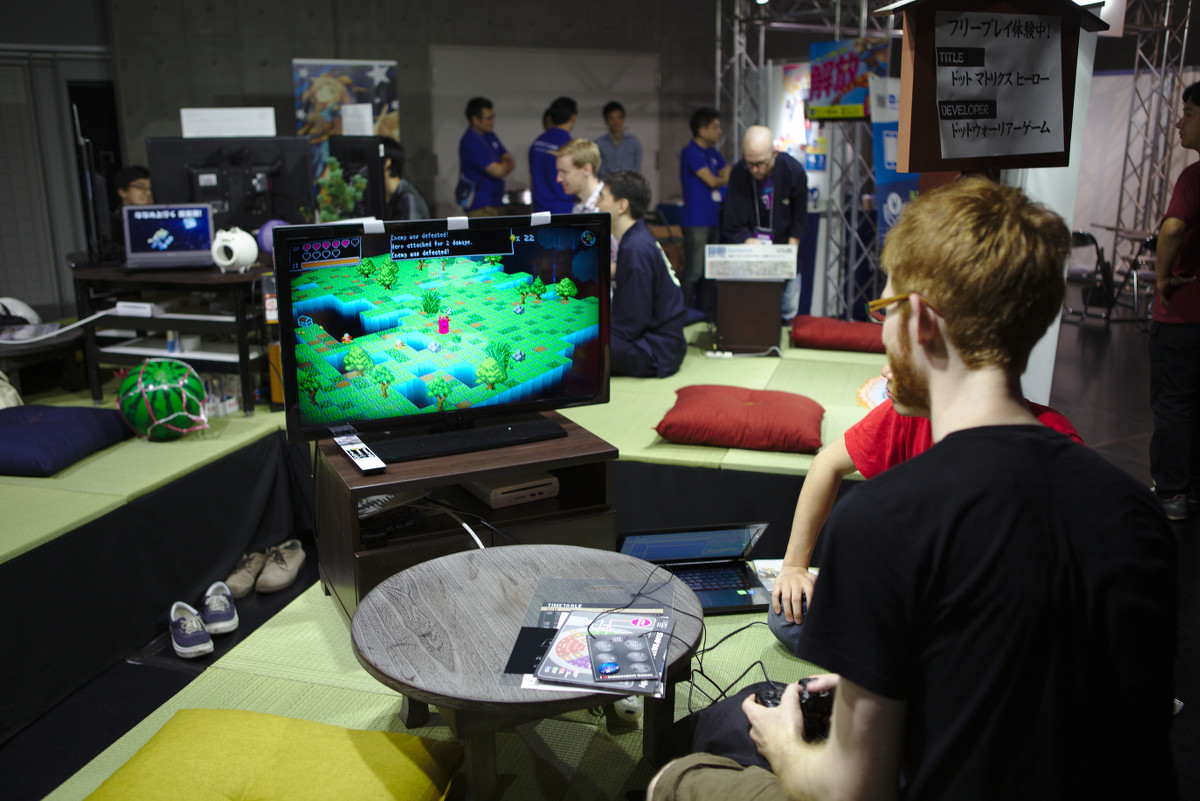
Some of them are very simple, too, and look like they belong more in an arcade center than a game console. I mention consoles, since that’s another great rift between Foreign and Japanese game developers: the indie market in Japan is basically dedicated to the PS4, more or less (you find some PS Vita and WiiU projects but those are ports), while the other game devs focus on Steam as first platform and consoles later, if the game works well enough.
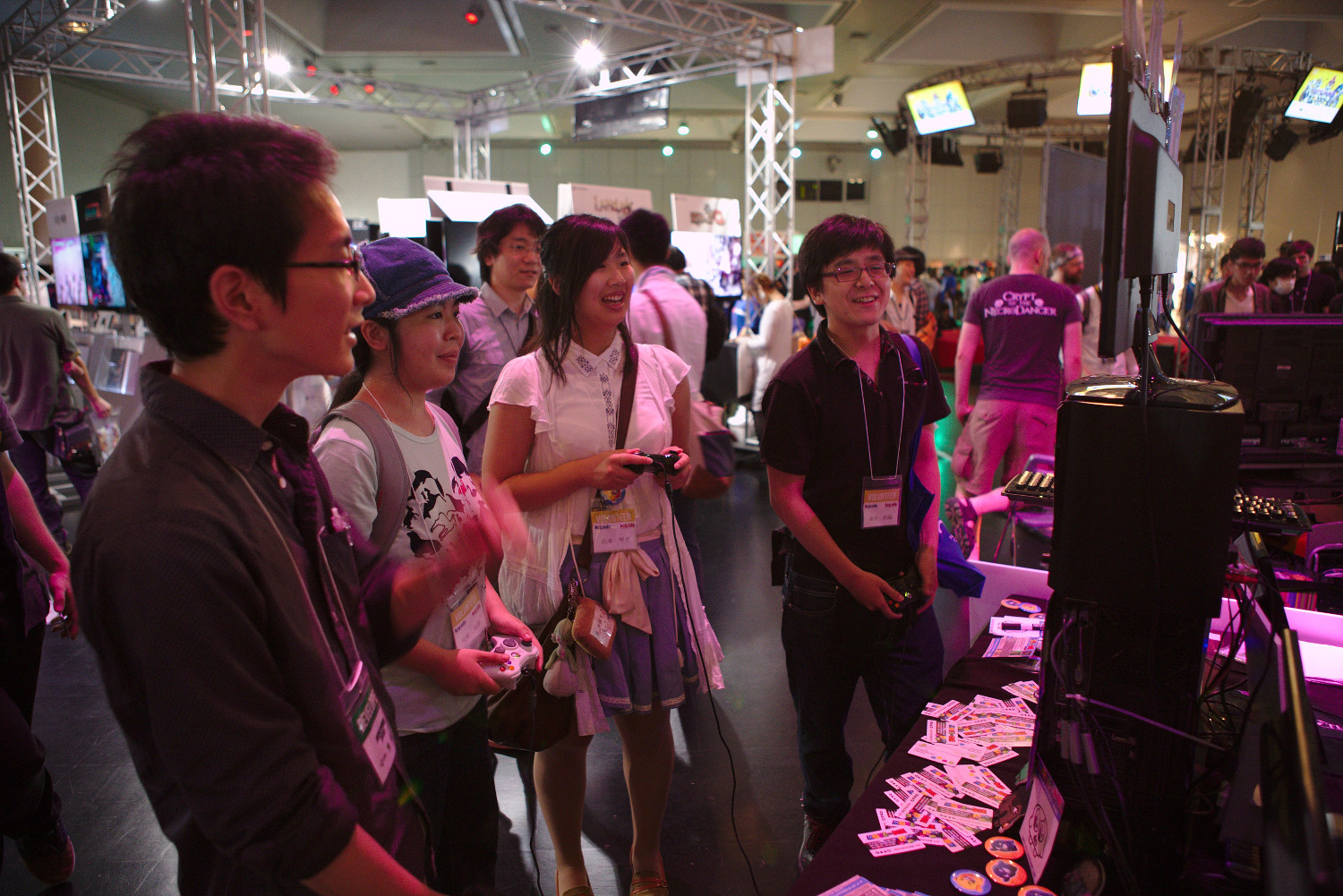
No surprise there, PC gaming is very limited in Japan and Steam is virtually unknown here. On top of that, a number of Japanese developers also focus on tablets and mobile phones nowadays - and I did not pay any attention to those since I like playing on these kind of devices about as much as I like going to the dentist.
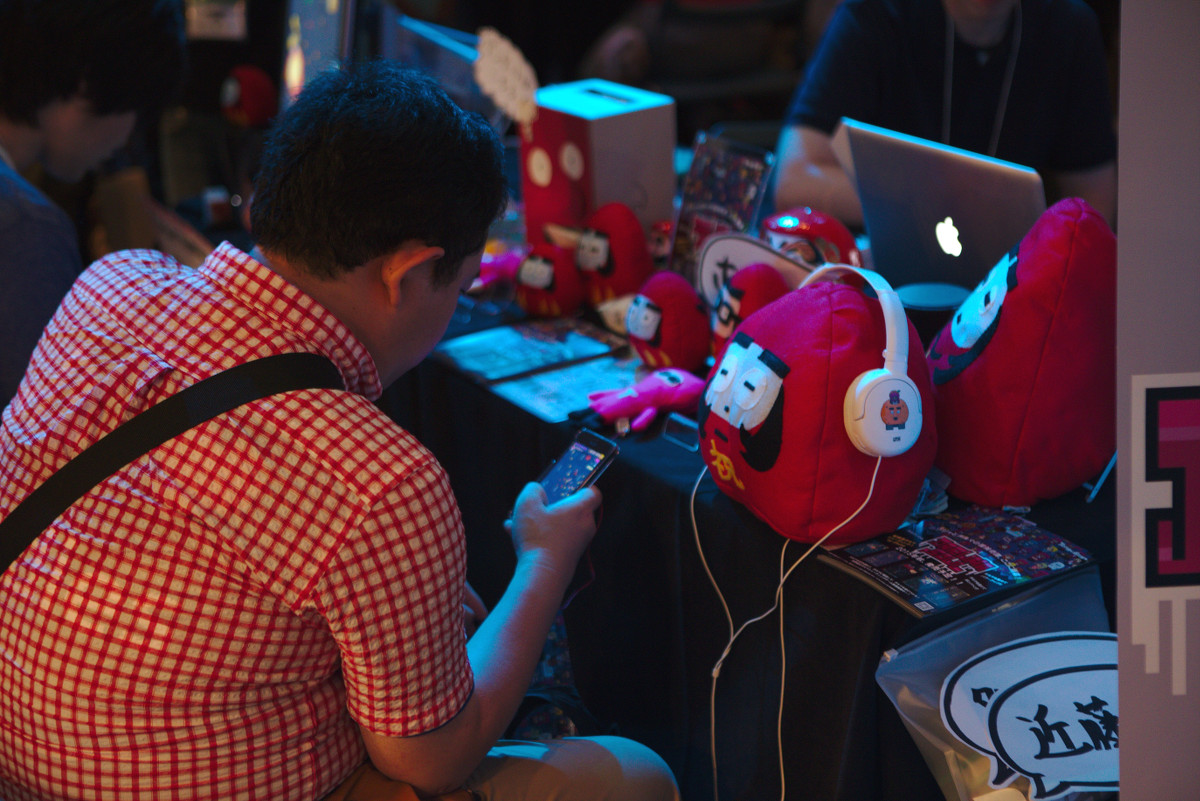
Now that we are done with the foreword, let’s talk about the Linux news.
I met with the developers from The Banner Saga (Stoic Studio from the US, based in Seattle, I think…) - they were showing the Banner Saga 2, and the good news is that while the first episode release was quite delayed versus the other platforms, the second episode will be released at the same time on Steam as the Windows and OSX version. I was asking about the Linux sales, and the representative told me she did not remember the figures but that they were small, and that most of the time when they heard about Linux users it was to complain or to report something that did not work - giving a little of negative impression. So hey, Linux gamers out there, go and drop a note in their official website (not the Steam forums, they don’t have time to check out what is happening there apparently) and tell them you love what they do ! The reason why they decided to support Linux was not for the money, but because one of their programmers thought that it was the right thing to do - although it took them a while to get there. At the time when they started working on the port they did not know about SteamOS and the Steam machines, and now it looks like they expect the market to grow in the future. They are actually a very small team, and if you were wondering how they can deal with the animation-rich cinematics in the game, well… they outsource that part to an external vendor - while they provide the keyframes that will be used to get started with the animation work. I am not sure what kind of budget they are working with, but for an indie dev it is pretty impressive to get to that kind of polishing.
Enter the Gungeon was a very, very fun game to play with - kind of like Nuclear Throne from Vlambeer, but better designed, from a US-based developer (Washington DC if my memory is correct) - it’s their first title and it kicks ass. You basically play with a pad and shoot your way through randomely generated areas. But it’s not pure random generation. Each room is actually crafted one by one, and the way they connect to each other is procedurally generated. So you kind of get the best of both worlds.
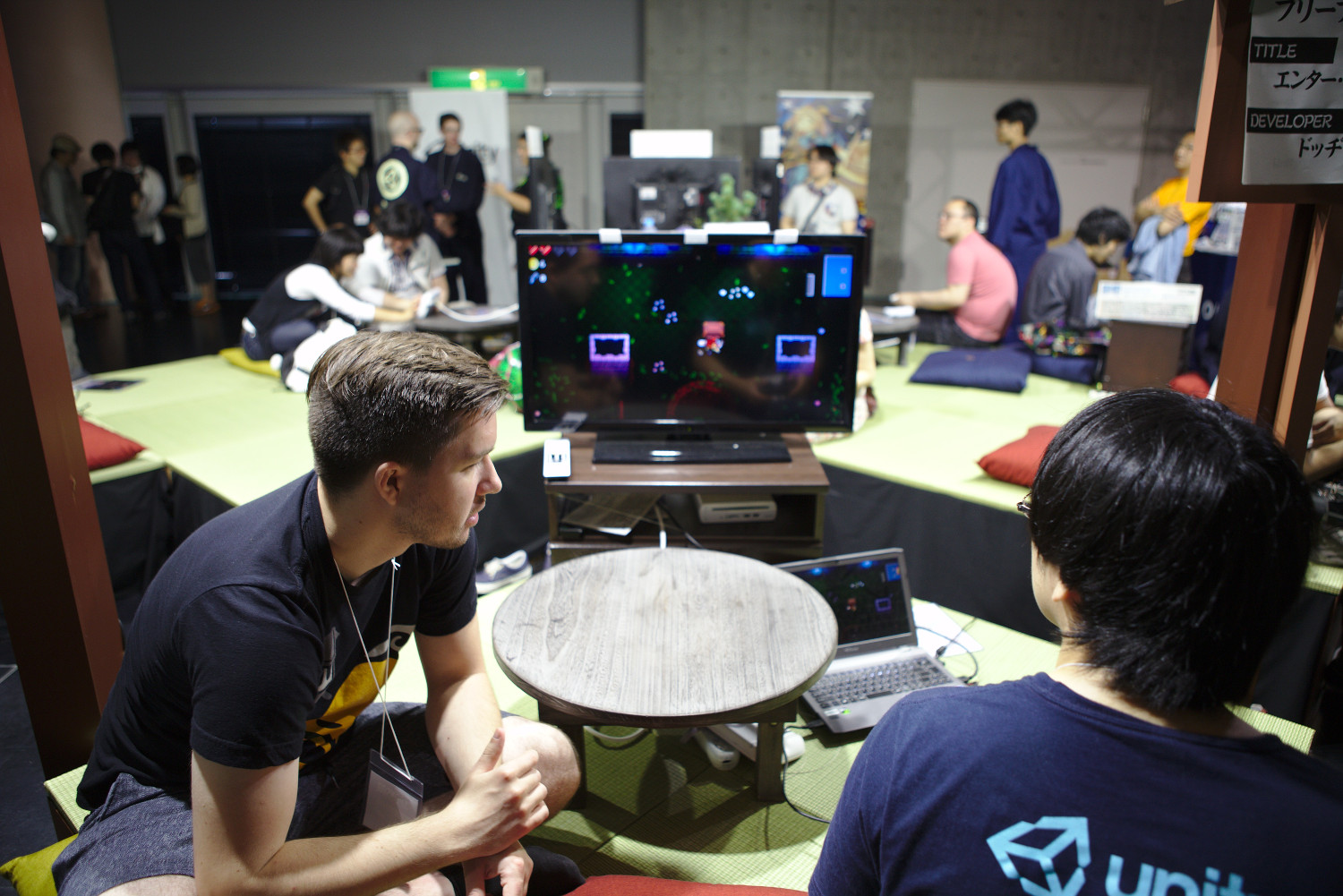
What was even more remarkable is the fact that they were advertising PS4/PC(sic)/MAC/LINUX even in their Japanese pamphlet. Not that I think any Japanese gamer would even understand what Linux means, but hey, it’s a first start. The game is supposed to come out early next year, and when I was asking “why do you support Linux ?”, the designer who was at the booth mentioned “it’s just a checkbox in Unity” which made us both laugh. Obviously, additional testing is required for a proper port, and they rely on Devolver Digital for the QA process, which is a good sign since Devolver has been doing a pretty good job with Linux ports so far.
Following my interview with Mark Morris from Introversion Software, I was pleasantly surprised to find out they actually had a booth here in Kyoto too ! The only person who was here though was Ryan, from the Philippines - he is the lead graphic designer for the game and works completely remotely (he was known for his work on SpaceChem and this is how Introversion got in touch with him in the first place). He has never even met with his colleagues in the UK, and he is apparently very busy these days working on Prison Architect since it’s going to be officially released within this year and there’s lot of contents that needs to be completed by then.
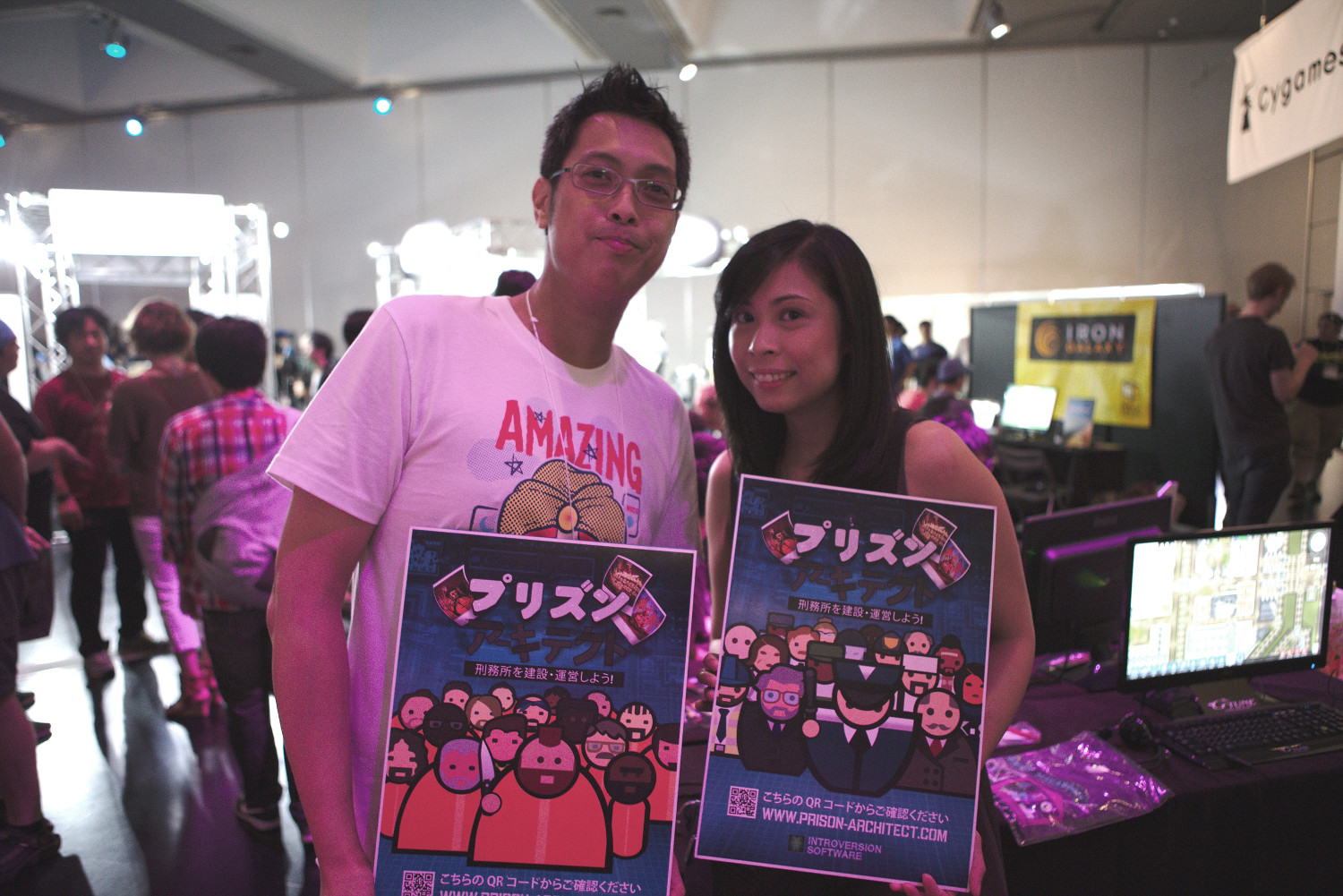 Ryan and his wife, both very nice folks, holding Japanese Posters for Prison Architect.
Ryan and his wife, both very nice folks, holding Japanese Posters for Prison Architect.
They also had an iPad version demonstrated at the show, which is not released anywhere yet - but they expect that version to represent the biggest opportunity in Japan (the PC market is Japan is quite small and not really focused on foreign games). The PC version of Prison Architect shown at the show was a Japanese mod of the game, since there are no official localizations available yet.
I met with the guys behind Might No9 as well, and the game was running with the same code as the last E3 show. It’s expected to hit the market on September 15th-18th (depending on your country - Steam being probably on the 15th), and I have asked TWICE for confirmation of the Linux release date.
 Might No9 actually looked awesome to play, even if it does look half as good as the original Kickstarter renders.
Might No9 actually looked awesome to play, even if it does look half as good as the original Kickstarter renders.
And each time, from two different persons involved with the project, they said that the Linux version would be released at the same time as the Windows/Mac version. Great news ! Looks like September will be a busy month for all Megaman-like fans, even in our community!
The main developer of Crypt of the Necrodancer, Ryan Clark (from Vancouver, Canada) was also at the show and gathered a lot of attention since he had a setup with dancing floor pads! Totally awesome, but these pads were apparently only made as prototypes in the first place, and never produced in higher numbers in the end.
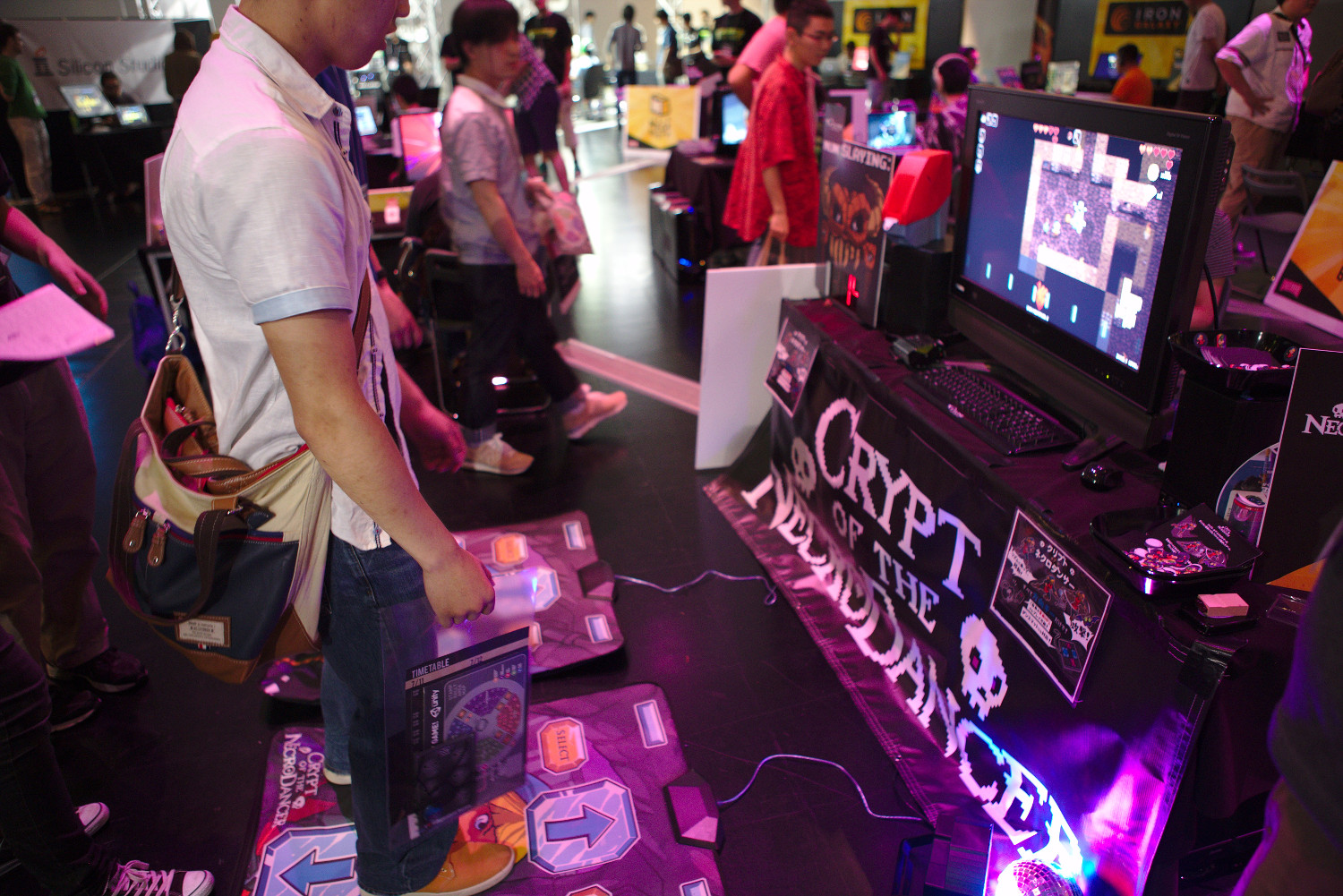
I had a couple of minutes to chat with him regarding his Linux support and sales. For Crypt of the Necrodancer, he said the Linux sales were less than 1% - and the main reason why he supported Linux was that he was a Linux user before, while he has now moved to Mac OSX - where you get a Unix-like environment as well as more software and more games in general, “the best of both worlds” in his own words. Well, I may not agree with him on that, but I do appreciate his continued Linux support.
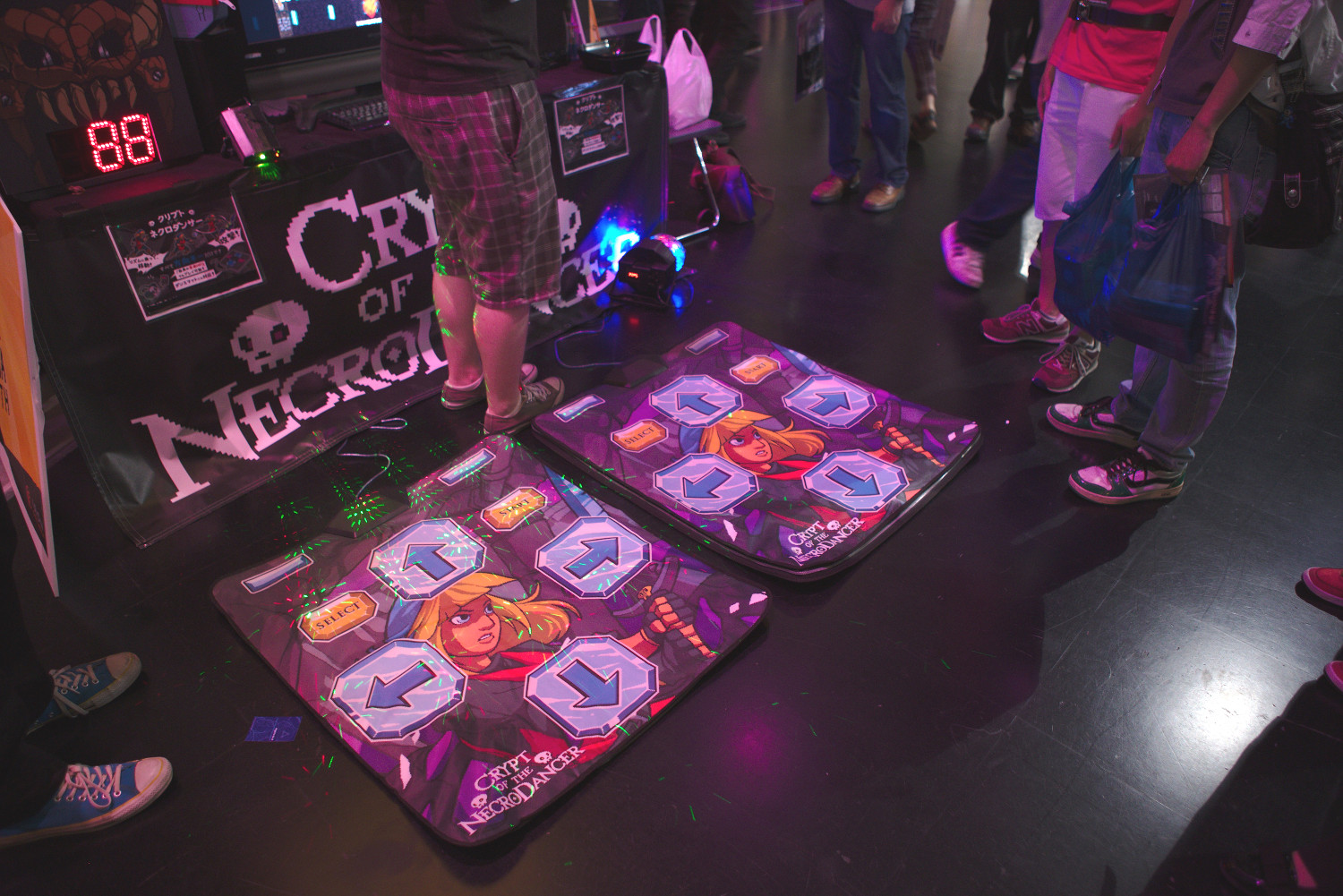
When asked about the Steam Machines, he was not sure whether it would be a success but thought that it was more of backup plan from Valve to have something to live with in case Windows becomes a closed store in the future. With actual exclusives (like HL3) on the platform, it may change the situation, but as we all know Valve has no intentions of doing any of that. By the way, Crypt of the Necrodancer is now available as a complete game (not in Early Access anymore) in case you missed the news.
I came across a game called the Town of Light,** **a first game from a small indie game studio based in Italy (Firenze). They are using Unity 5, and their title looks great (kind of like the Amnesia games) and it certainly does not look like something made by amateurs!
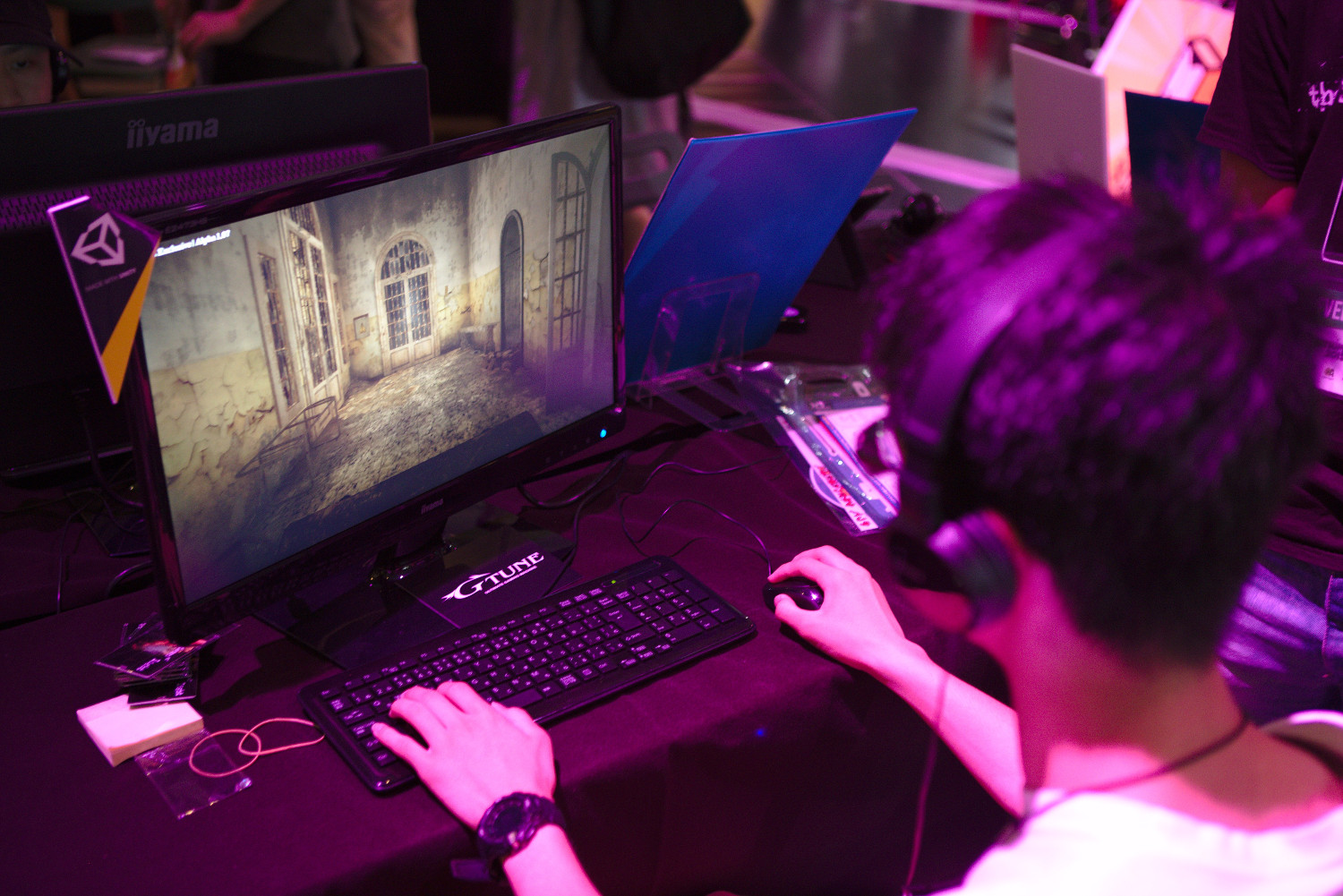
In this game you apparently play a 16 years old girl who is mentally challenged, and you go through a number of psychological experiences, involving puzzles - one of the developers mentioned this game was similar somewhat to The Vanishing of Ethan Carter, and that you could not really die - making it more of an experience than a pure game. The Windows and Mac version are planned for November-December apparently, and they are considering a Linux version for a couple of months later (sometimes like February 2016). Good news, and this is the first time I meet developers from Italy, I think.
The hit game Never Alone is being ported to tons of different platforms, and while the developer was not at the booth I heard that they were considering a Linux port, but that nothing was decided at this stage. On another booth, a retro-style game called Pixel Pirate (which has nothing to do with Pixel Piracy) looked pretty nice - and was made with Unity, with Windows and Mac in mind. When asked about Linux, the representative was not sure they would do it, so it’s in the air. We will see later what comes out.
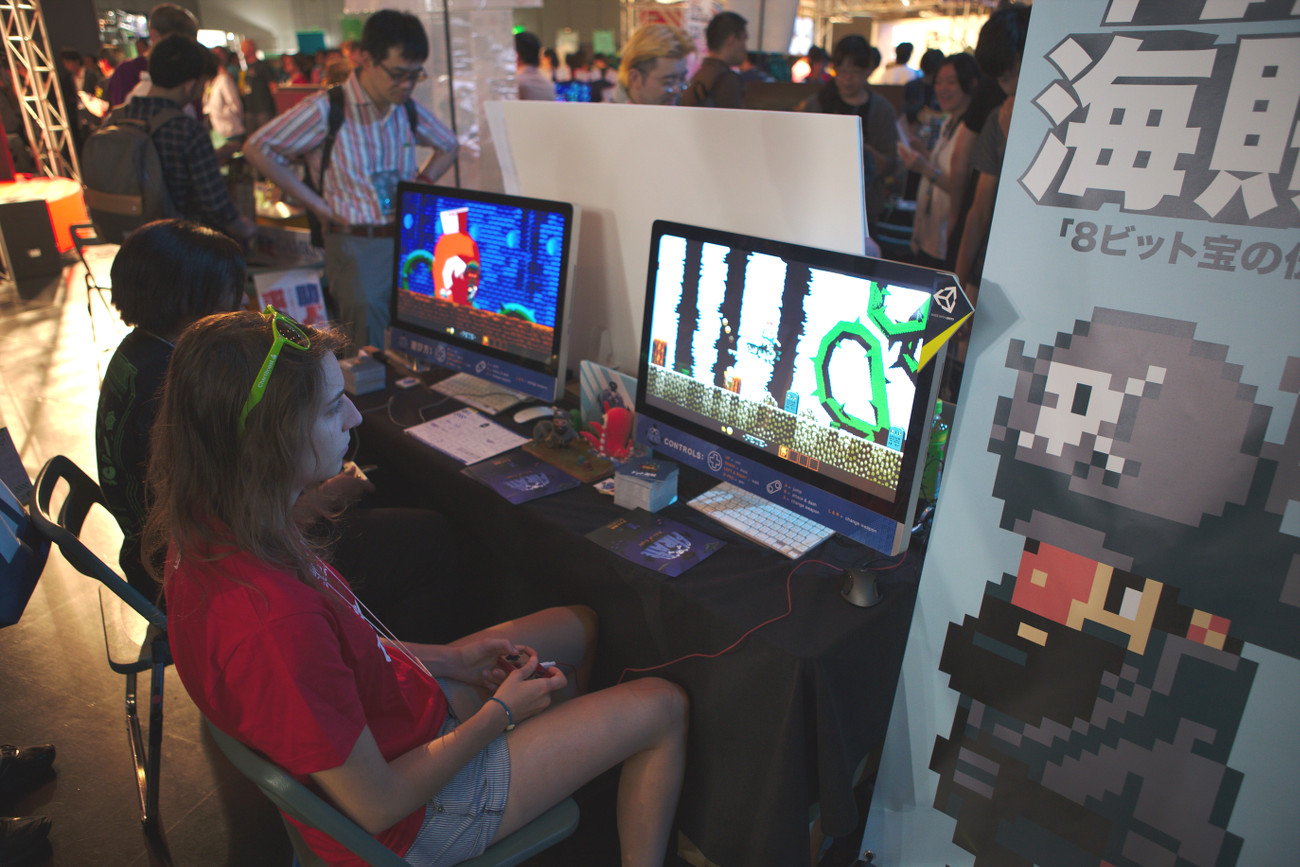 Yeah girl, I know how you feel. It sucks that there is not Linux version planned for this game.
Yeah girl, I know how you feel. It sucks that there is not Linux version planned for this game.
And finally, nothing to do with Linux per se, but Oculus was there to show off its GearVR prototype again - the VR tech that works with your mobile phone (and supported by Carmack himself). I did not have time to try it (the queue was way too long), but VR in general was in demo across several booths, just like last year at BitSummit and the TGS2014.
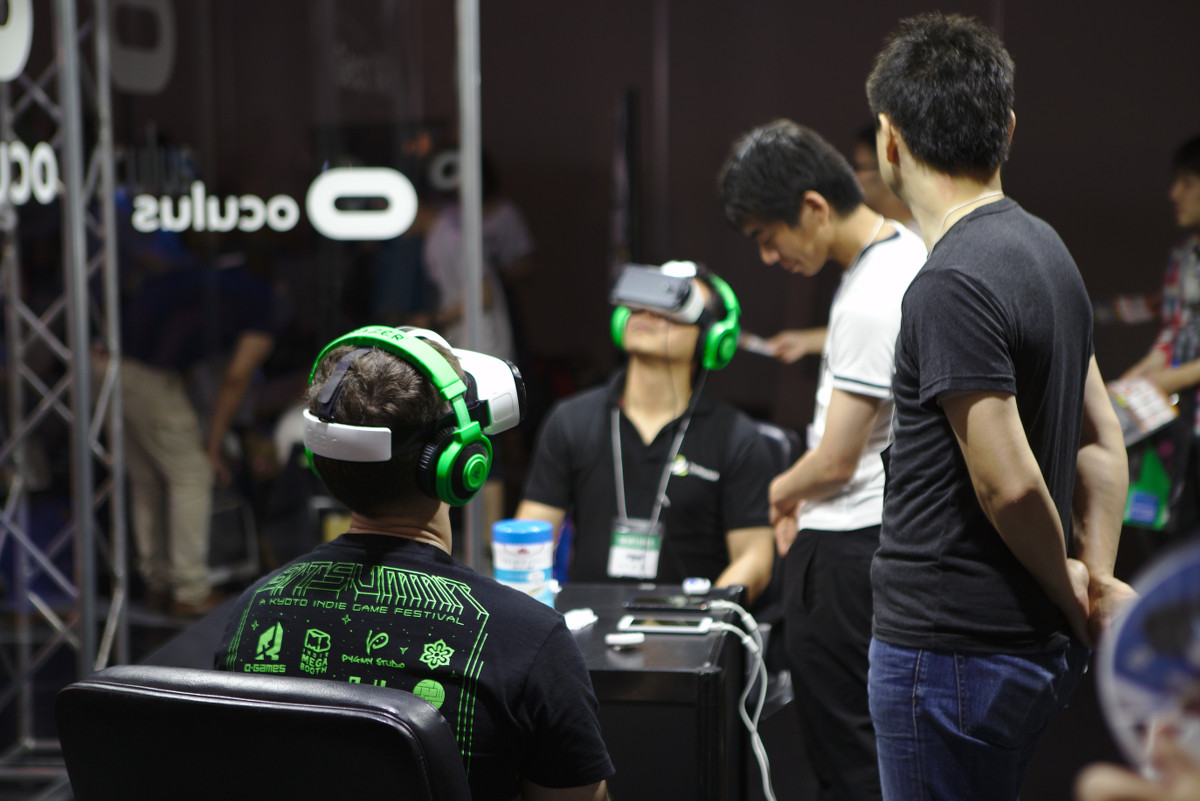 In Space No one Can Hear You Scream, but in VR Space Everyone Can See You Look Like a Dork.
In Space No one Can Hear You Scream, but in VR Space Everyone Can See You Look Like a Dork.
Since Oculus and the Vive from HTC will go on sale later this year, I expect to see more and more interest in such platforms, but what worries me the most is the lack of actual games that fit well with such devices. We know that cockpit games will work well, but for everything else, it’s a huge question mark at this stage. You cannot just replicate any style of game in VR and expect it to work very well - some games will definitely work better on 2d surfaces than virtual environments.
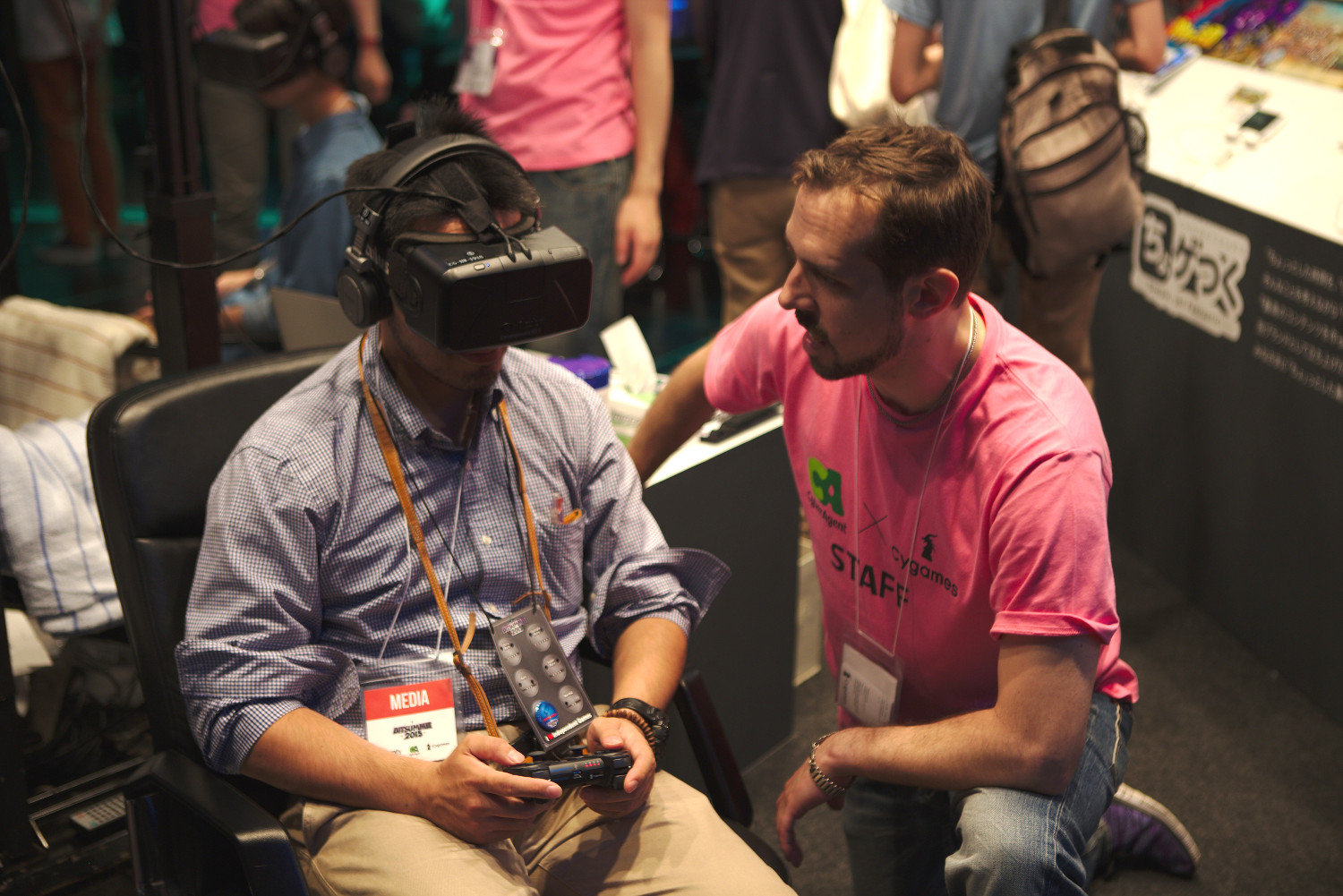 Remove ya fuckin’ headphones i’m tryin’ to talk to ya!
Remove ya fuckin’ headphones i’m tryin’ to talk to ya!
Plus, the sheer price of VR headsets is going to be dissuasive for the market to grow very fast at first. I think the potential will be there down the road when the technology becomes a commodity (when you can buy a headset for 200-300 USD) and when it will work well out of the box with your mobile phone or laptop (meaning when they are powerful enough to run such games without requiring an additional 500 USD GPU card) so that you do not have to purchase anything else. And of course, when developers manage to make great games for it. It’s very, very early to say, and I guess this is where Engine developers will try to differentiate as well, by providing tools to make better VR games.
There is a lot more to say about BitSummit, but that’s it for the Linux news.
Let me know in the comments if you have any question!
